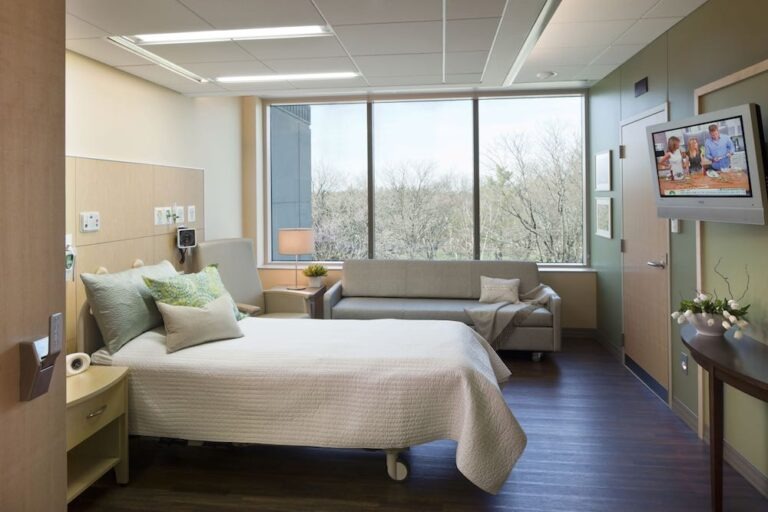
Sara Marberry
by Sara Marberry

Breaking news: “Hospital ratings often depend more on nice rooms than on healthcare.”
When I saw this headline in the Washington Post two weeks ago, I was irritated. I read the article. I was still irritated.
Then I read it again and had different thoughts. Have we got this all wrong?
Can good design actually be a cover-up for poor medical care?
Halo effect of hospitality
The article references a study of 3,000 U.S. hospitals by two Cornell University sociologists that suggests the “halo effect of hospitality” influences patients’ satisfaction more than the quality of care. The lead author of the study criticizes hospitals for competing for patients by offering private patient rooms and amenities instead of emphasizing medical outcomes.

In the abstract of the published study the authors state that “patients are very sensitive to the ‘room and board’ aspects of care” and that quiet rooms “have a larger impact on patient satisfaction than medical quality, and communication with nurses affects satisfaction far more than the hospital-level risk of dying.”
“Hospitality experiences create a halo effect of patient goodwill, while medical excellence and patient safety do not,” they conclude.
Flaws in the survey
Well, isn’t it obvious that it’s easier for patients to evaluate how they are treated, how good the food is, and what their surroundings look like than the clinical aspects of their care? Plus, many experts have pointed out the flaws in the multiple-choice HCHAPS survey instrument that asks patients to recall their experience — often long after it is over.
And is there something wrong with giving patients a nicer room, quieter surroundings, better food, and technology that allows them to easily access information and entertainment as well as communicate with family members? Research has shown that the design of the physical environment can help reduce stress and anxiety and help prevent things like infections and falls — all of which can lead to better health outcomes.
Quality of medical care most important
Hospitals aren’t hotels though. Never have been and never will be. The quality of medical care and patient safety is what should be most important to the patient experience.
And while the design of the physical environment may be part of the so-called “hospitality halo” that affects how patients rate their experiences, it’s essential to remember that it also supports how medical care is delivered by staff and received by patients.
Lots of healthcare providers get this. Many don’t. And it may be easier for them to improve the physical environment and add amenities than to improve the quality of medical care and patient safety.
But there is no reason they can’t do both. Only focusing on one or the other doesn’t fully address the patient experience.
What do you think?
This column originally ran on Sara Marberry’s blog on July 31. Marberry is a healthcare design expert who has written/edited five books and is a regular contributor to Healthcare Design magazine. Marberry also is a former Executive Vice President of the nonprofit Center for Health Design.
Photo: Courtesy of HDR.
